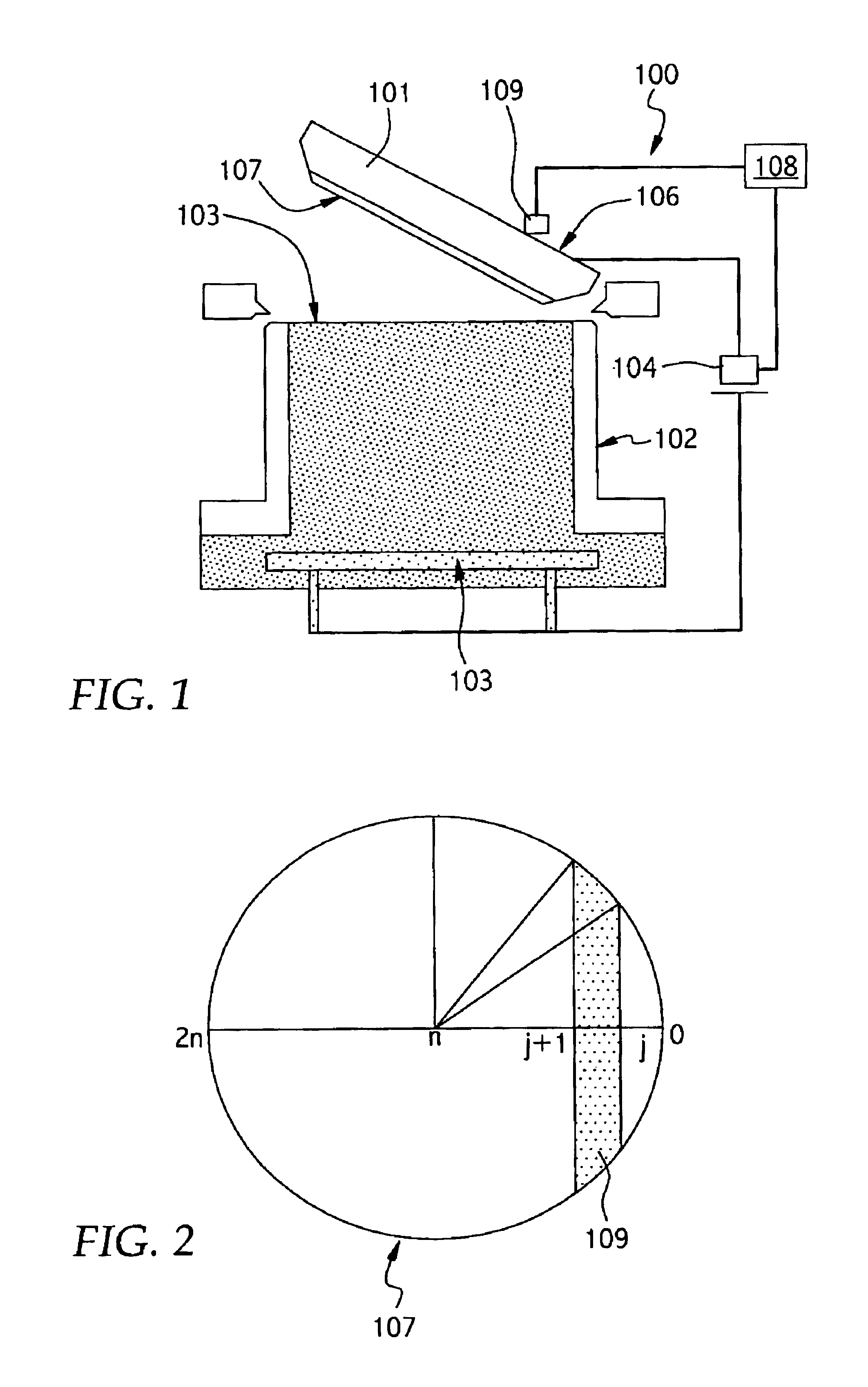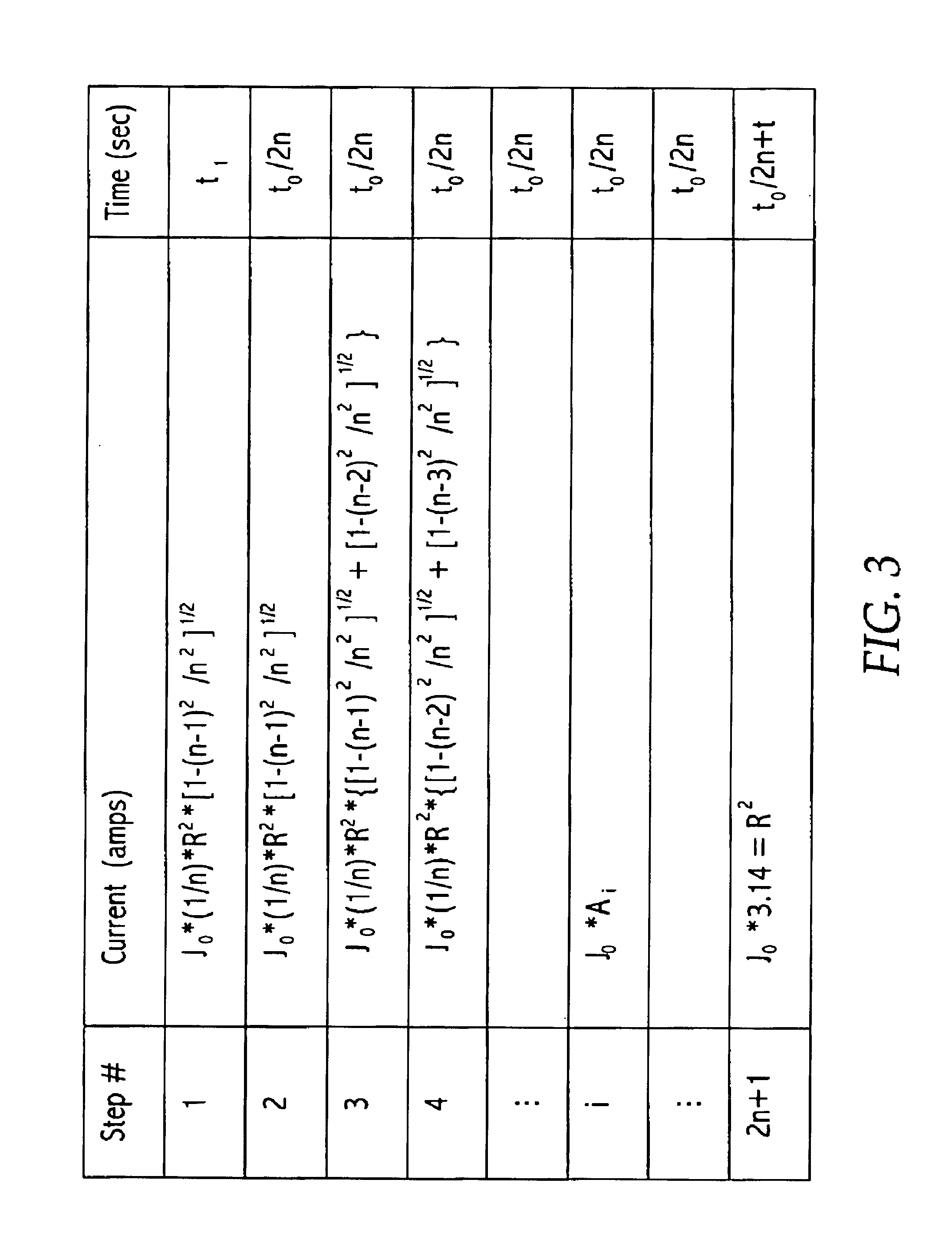Method for regulating the electrical power applied to a substrate during an immersion process
a technology of electrical power and immersion process, which is applied in the direction of machining electric circuits, manufacturing tools, electric circuits, etc., can solve the problems of increasing the difficulty of filling void-free interconnect features via conventional metallization techniques, increasing the resistance of conductive paths, and increasing the difficulty of plating irregularities
- Summary
- Abstract
- Description
- Claims
- Application Information
AI Technical Summary
Benefits of technology
Problems solved by technology
Method used
Image
Examples
Embodiment Construction
[0017]The present invention generally provides an apparatus and method for controlling the voltage or current applied to a substrate being immersed in an electrolyte solution. The voltage or current may be controlled in a manner that provides a constant current density across the surface of the substrate as the area of the substrate contacting the electrolyte increases during the immersion process. The application of a constant current density to the substrate surface operates to prevent seed layer irregularities and / or discontinuities that may facilitate plating uniformity problems in subsequent processing steps.
[0018]FIG. 1 illustrates a plating cell 100 during a substrate immersion process of the invention. Plating cell 100 generally includes a cell body 102 configured to contain a fluid solution and an anode 105 therein. The cell body 102 generally includes an open top portion configured to receive a lid 101 therein. Lid 101 can generally be configured to support a substrate 107...
PUM
| Property | Measurement | Unit |
|---|---|---|
| Time | aaaaa | aaaaa |
| Power | aaaaa | aaaaa |
| Density | aaaaa | aaaaa |
Abstract
Description
Claims
Application Information
 Login to View More
Login to View More - R&D
- Intellectual Property
- Life Sciences
- Materials
- Tech Scout
- Unparalleled Data Quality
- Higher Quality Content
- 60% Fewer Hallucinations
Browse by: Latest US Patents, China's latest patents, Technical Efficacy Thesaurus, Application Domain, Technology Topic, Popular Technical Reports.
© 2025 PatSnap. All rights reserved.Legal|Privacy policy|Modern Slavery Act Transparency Statement|Sitemap|About US| Contact US: help@patsnap.com



